The Black Death Gothic Sword (#1372)

The Black Death Medieval Sword
Inspirational, Type XVIIIa blade.
The Black Death Gothic battle ready Sword was another interesting project to work on. Inspired by Type XVIIIa blades of the fifteenth century, and characteristics of our Gothic Two Handed Sword ; The Black Death follows the typical gothic patterns of the battle ready swords of the later part of medieval period.
Blade: 5160 High Carbon Steel. Dual Tempered HRc 60
48-50 at the core
Total length: 51″
Blade length: 38.5″
Blade width: 2″
Weight: 4lbs. 1oz.
630.00 USD – 790.00 USD

They died by the hundreds, both day and night,
and all were thrown in … ditches and covered with earth.
And as soon as those ditches were filled, more were dug.
And I, Agnolo di Tura … buried my five children with my own hands …
And so many died that all believed it was the end of the world.
* Agnolo di Tura del Grasso
Few words carry the weight, the cold horror, the twisting fear as does this – Plague.
Despite innovations both technological and cultural, the human race in Europe was very nearly wiped out during the 14th century by a disease we now call the bubonic plague. Beginning in the 1340’s were decades of death by one of the most virulent diseases in history – one that would kill between 75 and 200 million people before it had run its course in the early 15th century. The death rate in Europe was recently estimated at nearly 45-50%. Carried by diseased rats and spread to humans via fleas, it was a remarkably infectious and deadly disease, killing most victims within a week of infection. It was also an almost unimaginably painful way to die, as victims suffered with agonizing black boils and enormous tumors for days before drowning in infected lungs. These black boils may have led to the plague’s most common nomenclature – The Black Death.
To Europe’s inhabitants, it seemed like the end of days – and it almost was. It was also a crisis of faith on an unbelievable scale that changed the course of Europe’s culture forever. For centuries afterward The Black Death had a lasting impact on culture, drawing out morbidity and mortality as primary themes in art and architecture. Stark lines, images of deep sorrow, even specters of death grew to prominence during this period as Europe struggled to cope with a tragedy on such an epic scale. These themes spread across the continent and established themselves as primary features in many cities.
Paris was one such city, embracing gothic architecture and letting the suffering of the Black Death seep into its marrow in a way that never quite left. Indeed, one of the first examples of the Danse Macabre (a classical image of Gothic morbidity) appeared in Paris at the Church of the Holy Innocents less than twenty years after the last resurgence of the plague in Europe. It should be no surprise, then, that when faced with a public health crisis even centuries after the plague itself that they allowed a solution to blossom that was gothic on a truly inspired level. During the 18th century Paris was running out of room for graveyards, and the health issues caused by so many burials within their walls – especially the smell – that a solution had to be found. City officials decreed that graveyards would be emptied, and the remains were sent to a network of caves, quarries, and tunnels twisting and turning for hundreds of miles beneath the city.
From this decision was born the Paris Catacombs. Within the Catacombs lie the remains of an estimated 6 million people, most of them skeletal. Unlike traditional burial grounds, though, the bones removed to the Paris Catacombs 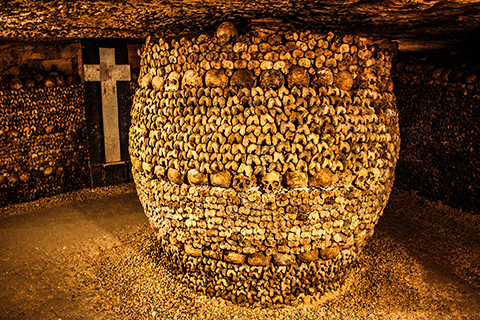 were arranged with an eye towards Gothic sensibilities – as macabre a scene as you could ever find in all of Europe. Miles of tunnels are lines with artistically arranged skulls and bones combines with crosses and other religious iconography, creating a grim yet beautiful reminder of mortality. Currently the Paris Catacombs are a tourist attraction, though not one without risks – there are long portions that are off-limits and unmapped, and modern Parisians have gotten lost while exploring, and died alone in the darkness.
were arranged with an eye towards Gothic sensibilities – as macabre a scene as you could ever find in all of Europe. Miles of tunnels are lines with artistically arranged skulls and bones combines with crosses and other religious iconography, creating a grim yet beautiful reminder of mortality. Currently the Paris Catacombs are a tourist attraction, though not one without risks – there are long portions that are off-limits and unmapped, and modern Parisians have gotten lost while exploring, and died alone in the darkness.
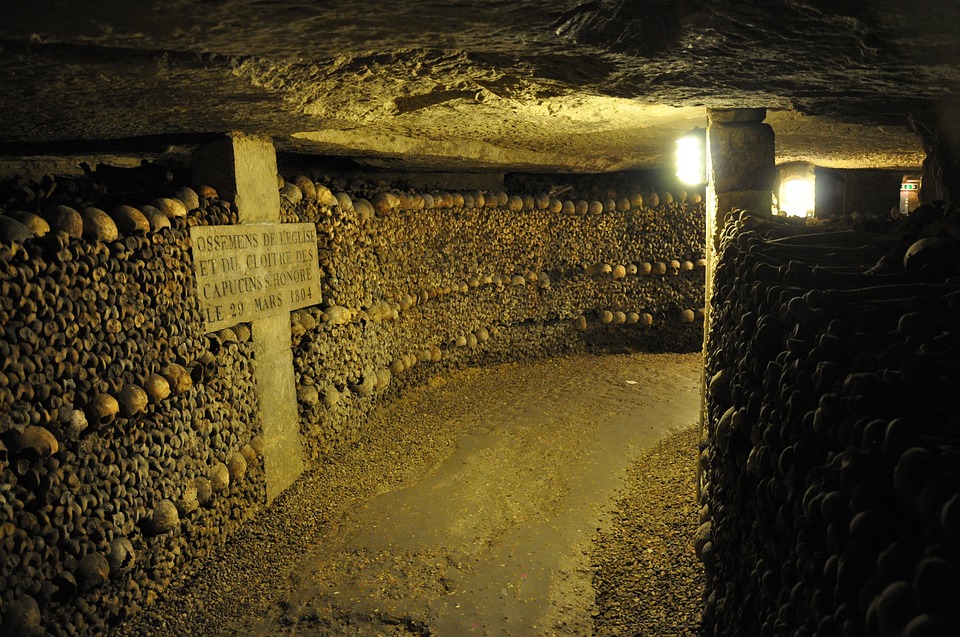 The Black Death Gothic Sword was inspired by a journey through the Paris catacombs by Darksword Armory founder Eyal Azerad in April 2013. A classical 15th Century type XVIIIa longsword blade has been paired with inspirational guard and pommel to create a unique concept piece. The guard and pommel have been given a dark, almost sinister appearance to fit in with the overall theme of sorrow and death. The Black Death Gothic Sword is an exceptional take on the Gothic-era swords, and would fit as a historically-inspired collector’s piece or as a weapon for cosplaying someone from Gothic-inspired fiction, such as a vampire hunter. In either case, we hope this sword will communicate the sense of fleeting mortality that inspired it.
The Black Death Gothic Sword was inspired by a journey through the Paris catacombs by Darksword Armory founder Eyal Azerad in April 2013. A classical 15th Century type XVIIIa longsword blade has been paired with inspirational guard and pommel to create a unique concept piece. The guard and pommel have been given a dark, almost sinister appearance to fit in with the overall theme of sorrow and death. The Black Death Gothic Sword is an exceptional take on the Gothic-era swords, and would fit as a historically-inspired collector’s piece or as a weapon for cosplaying someone from Gothic-inspired fiction, such as a vampire hunter. In either case, we hope this sword will communicate the sense of fleeting mortality that inspired it.
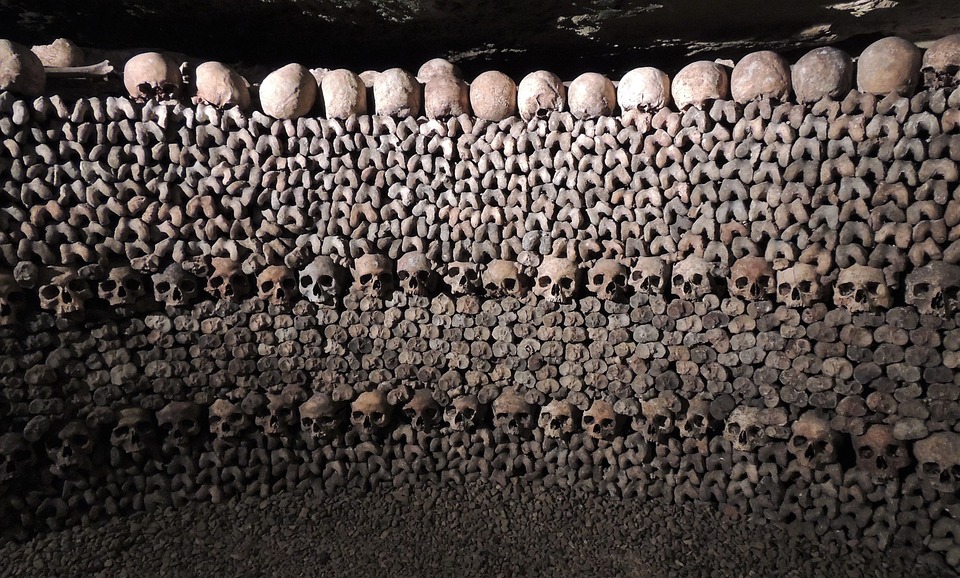
Blade: 5160 High Carbon Steel. Dual Tempered HRc 60
48-50 at the core
Total length: 51″
Blade length: 38.5″
Blade width: 2″
Weight: 4lbs. 1oz.
| Package : | Blunt blade & Scabbard : $630.00, Sharpened blade & Scabbard : $665.00, Blunt blade, Scabbard & Interlaced Sword Belt : $755.00, Sharpened blade, Scabbard & Interlaced Sword Belt : $790.00 |
|---|
4 reviews for The Black Death Gothic Sword (#1372)
Add a review Cancel reply
This site uses Akismet to reduce spam. Learn how your comment data is processed.
Related products
Fantasy Swords
Broadsword
Fantasy Swords
Broadsword
Medieval Swords
Medieval Swords
Fantasy Swords
Arming Swords
Claymore Swords
Broadsword
Medieval Swords
Medieval Swords



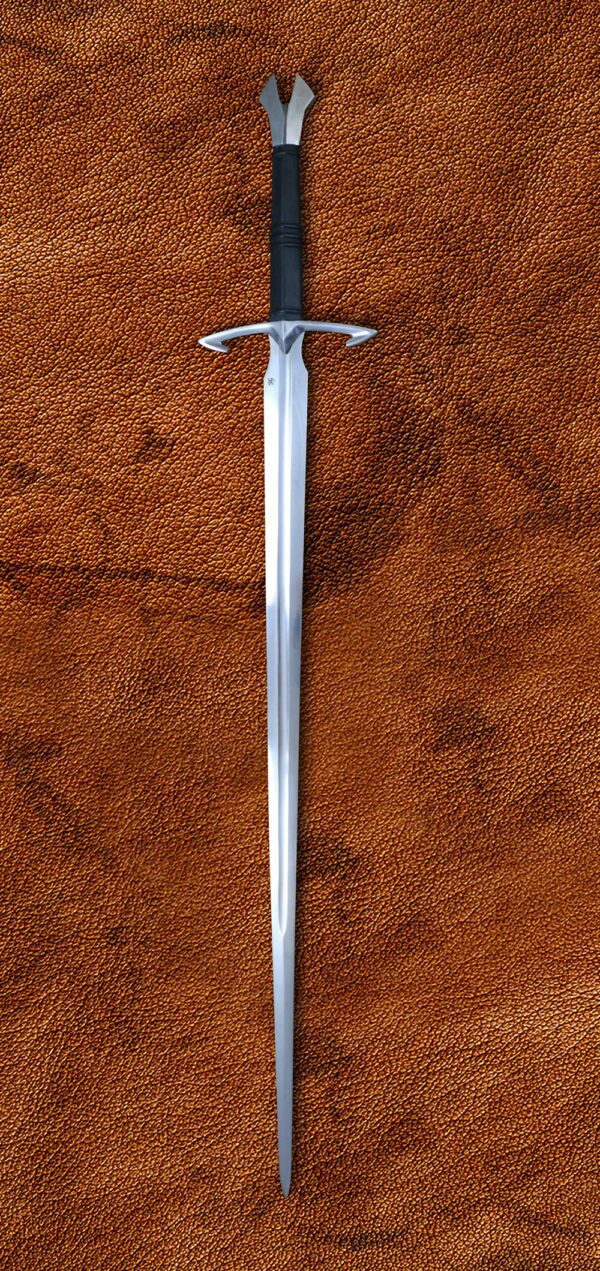
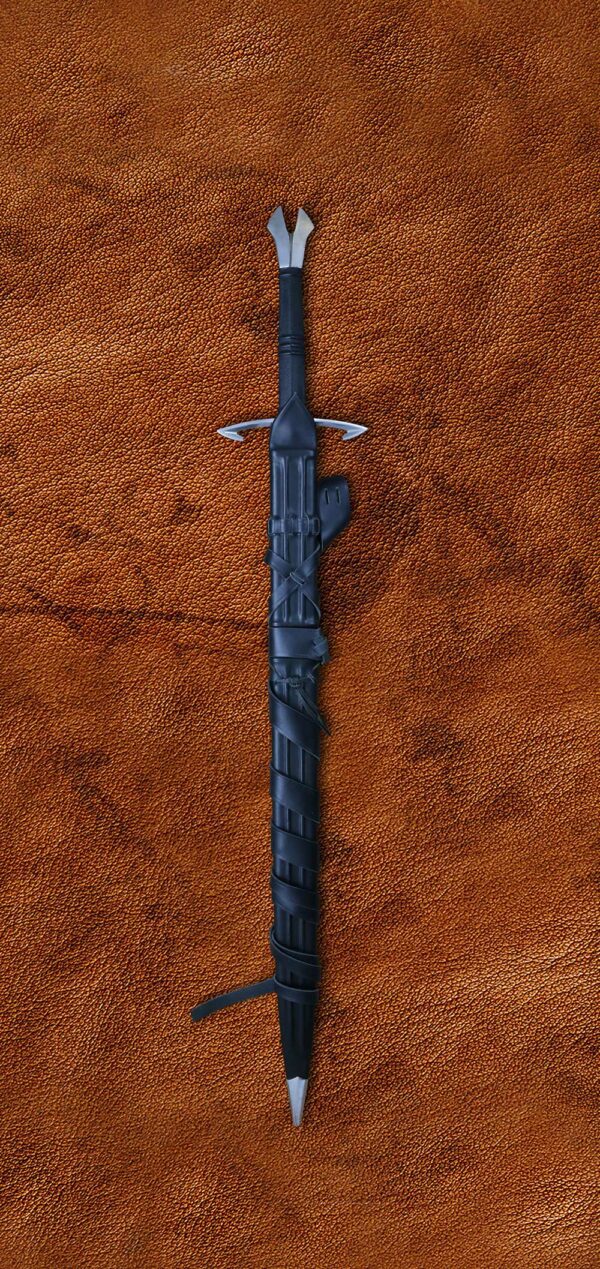
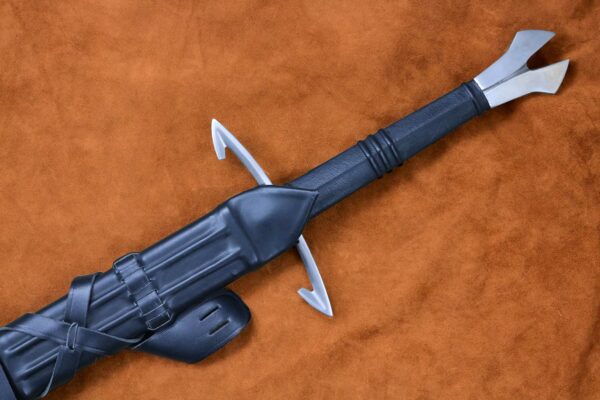
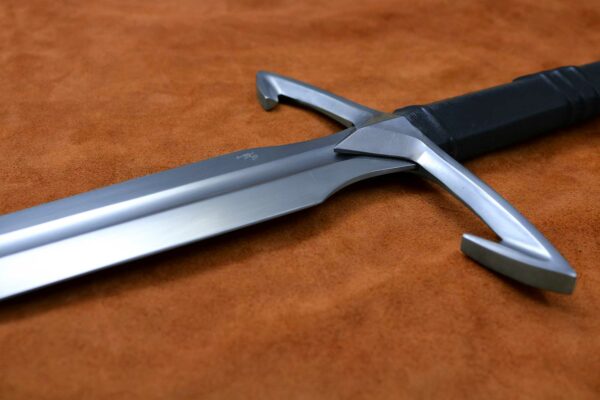







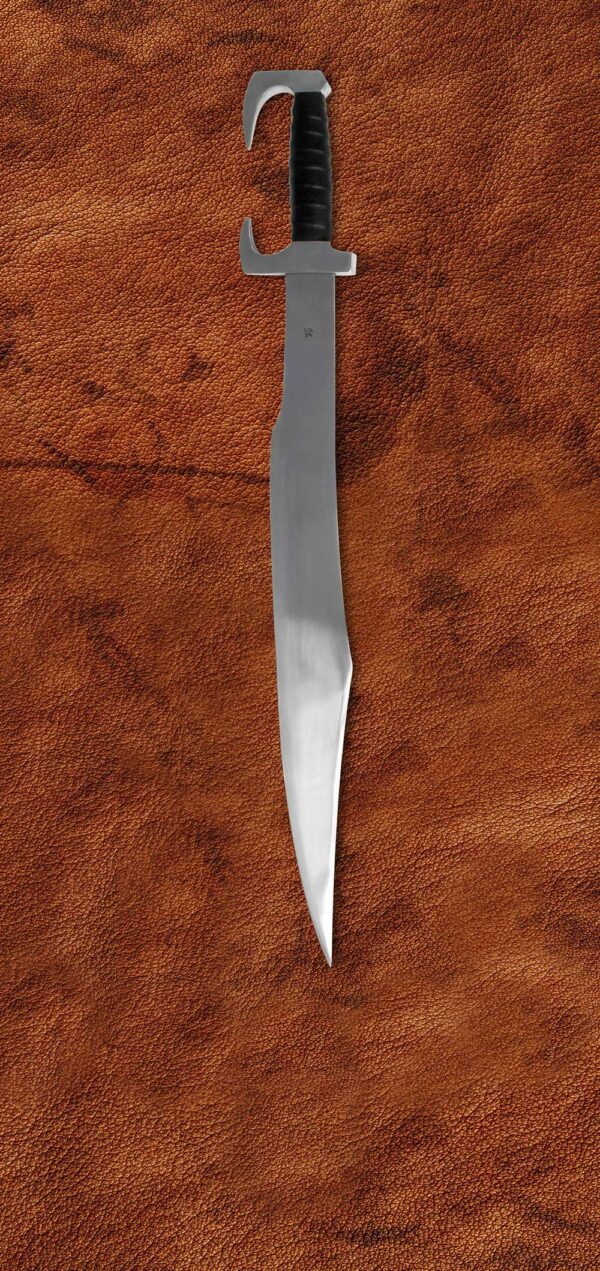
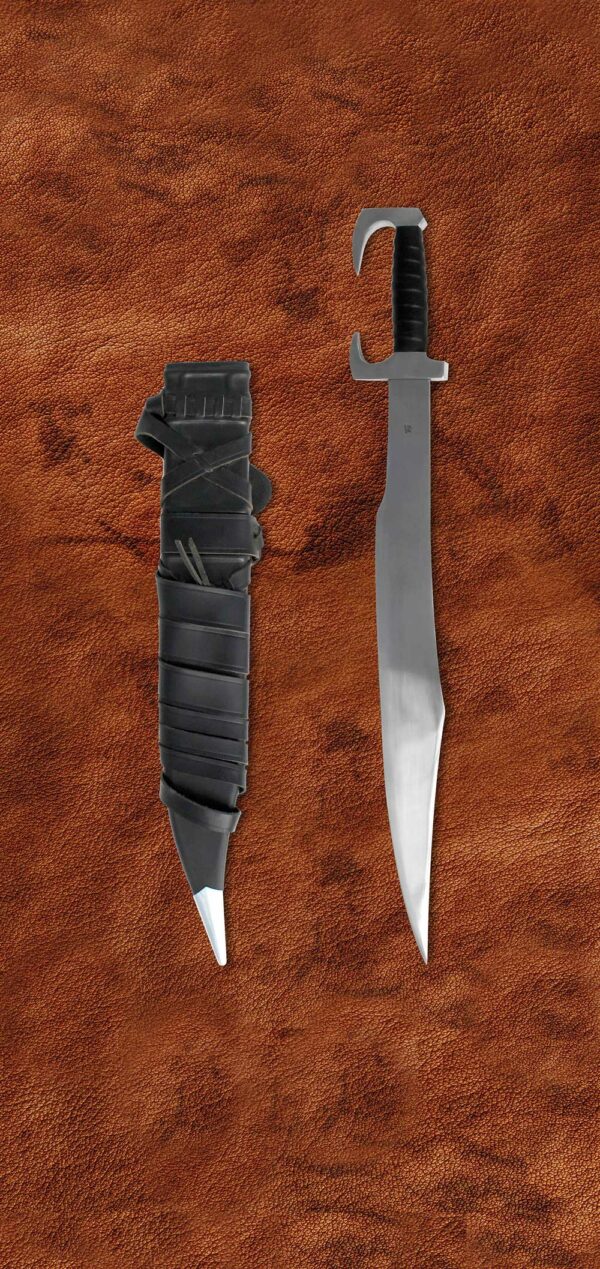
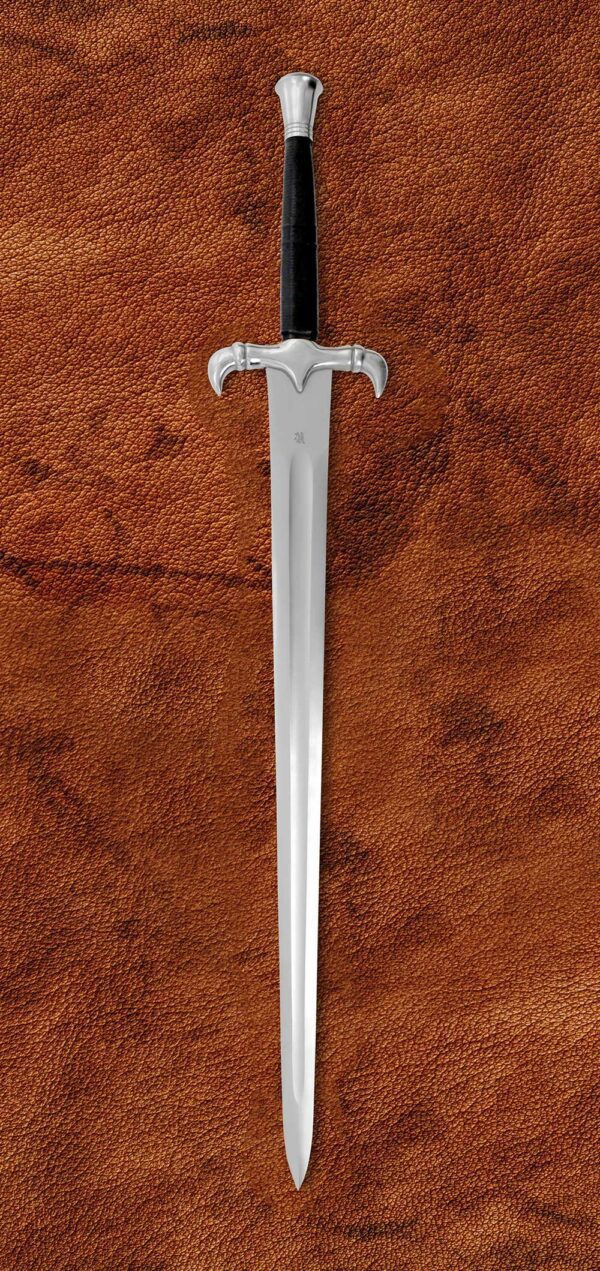
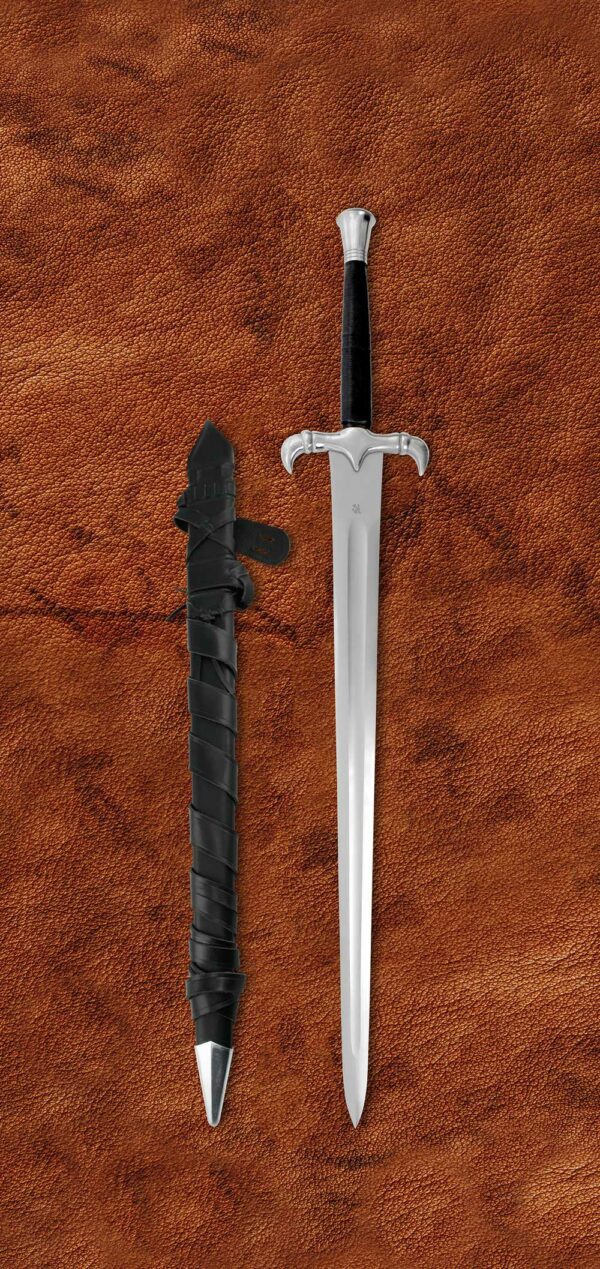
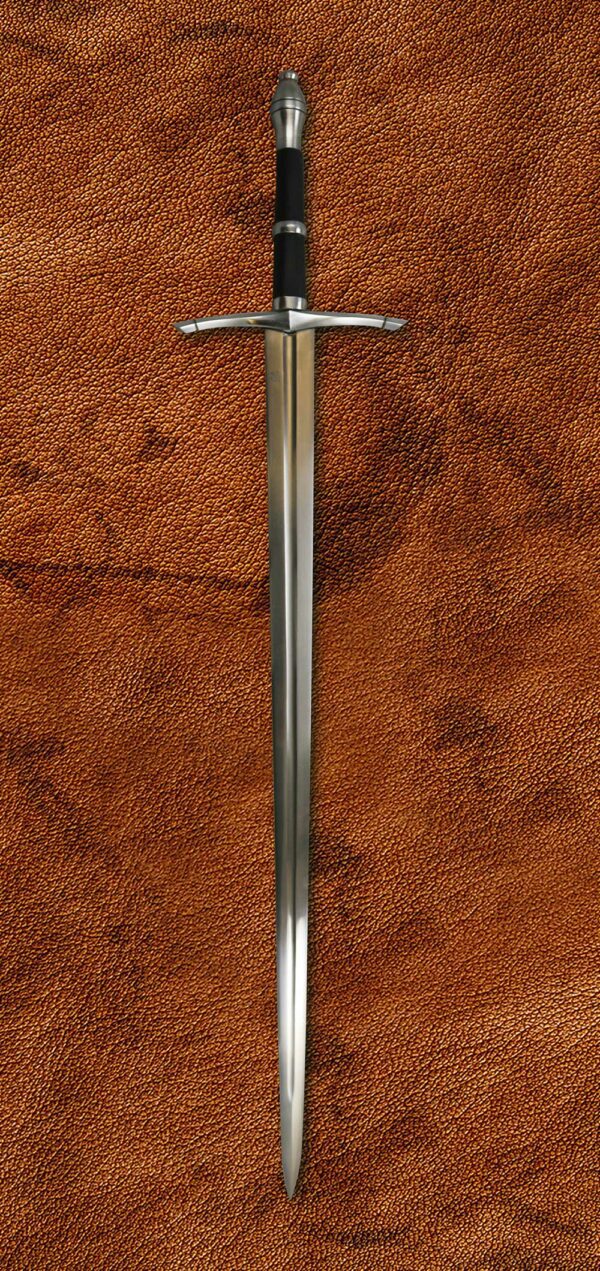
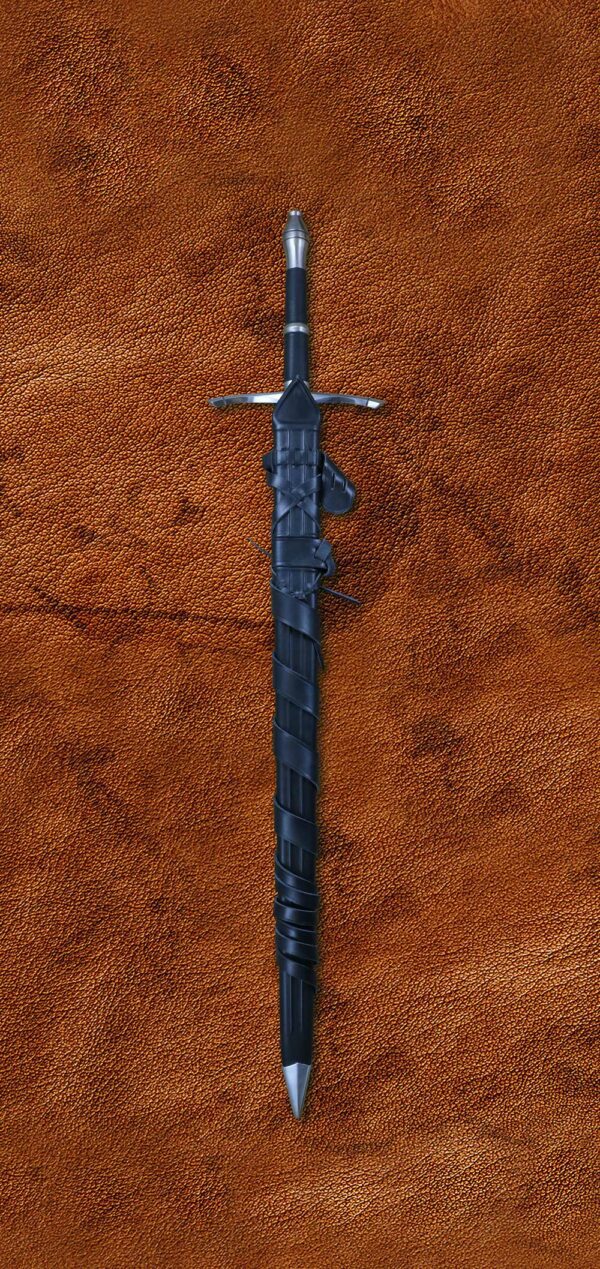
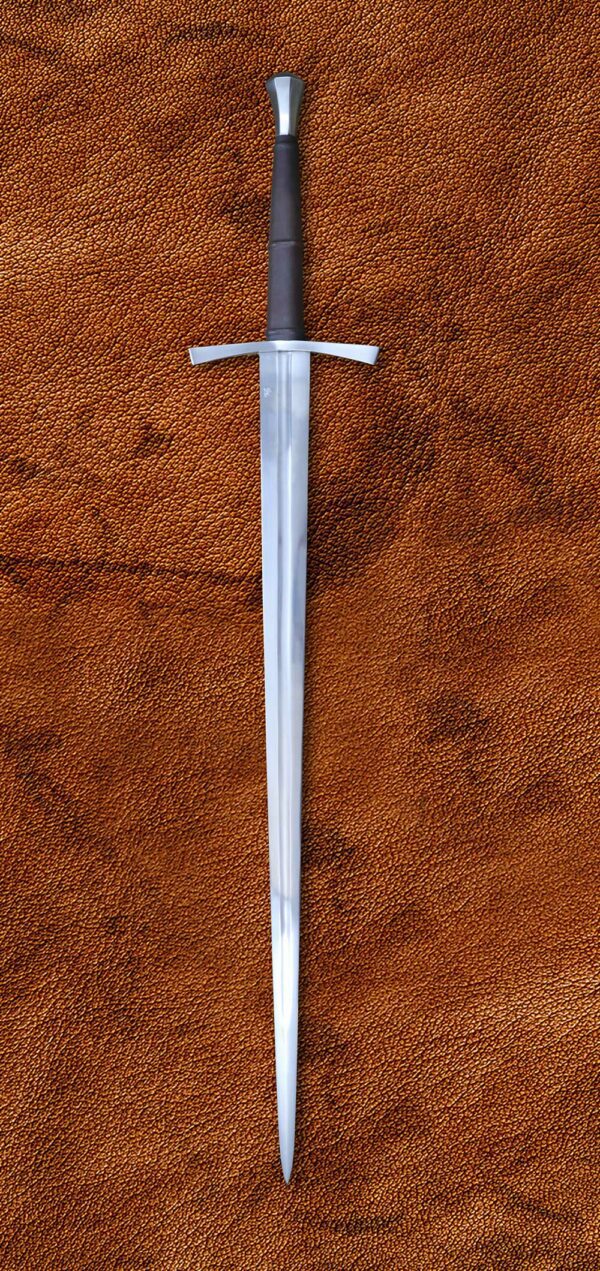
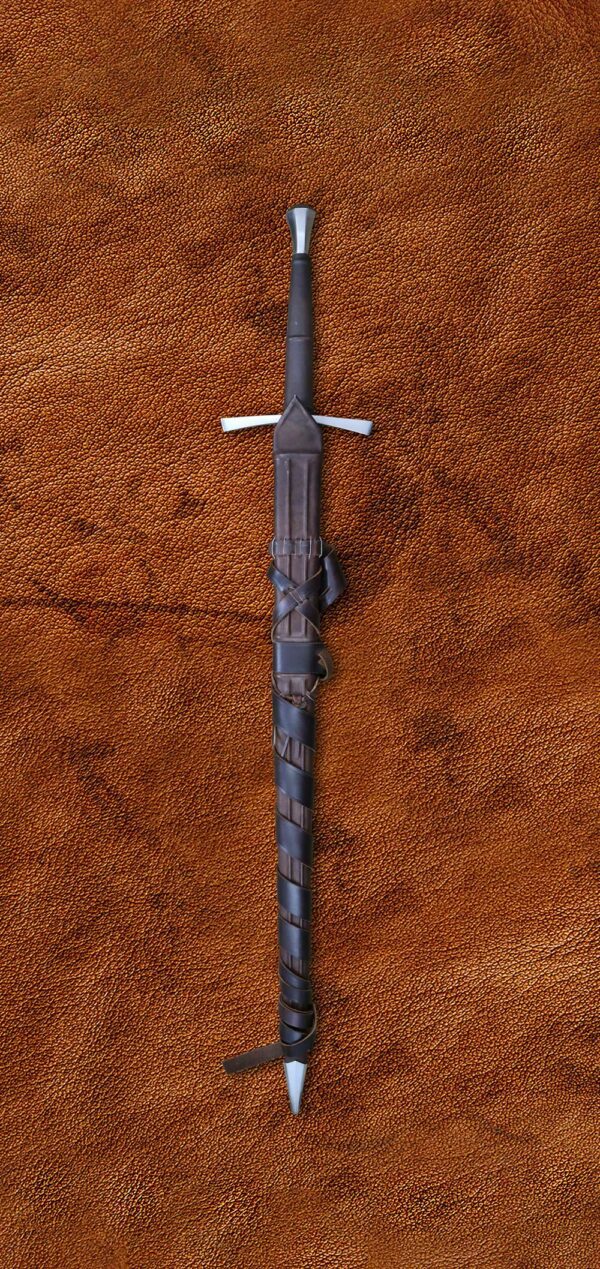
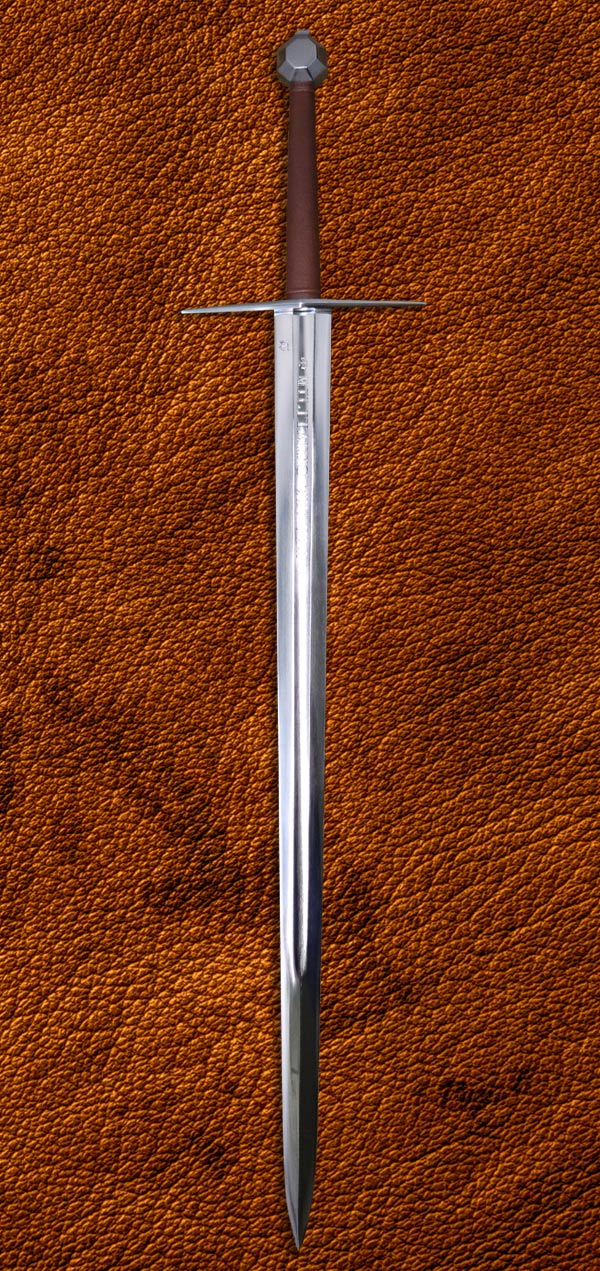
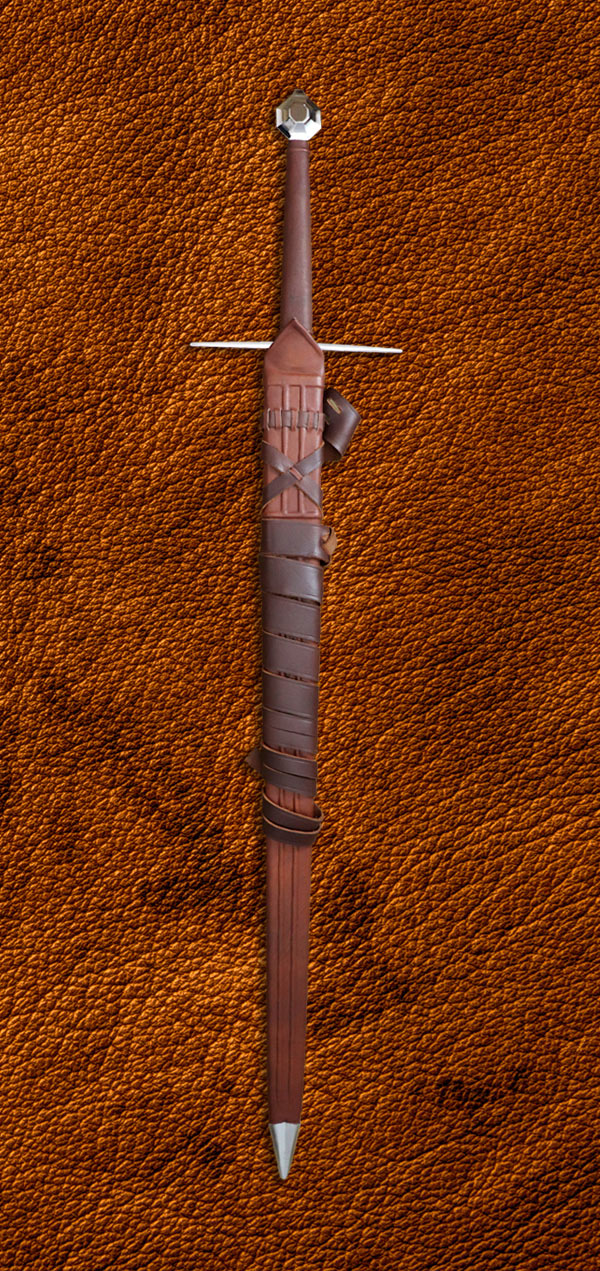
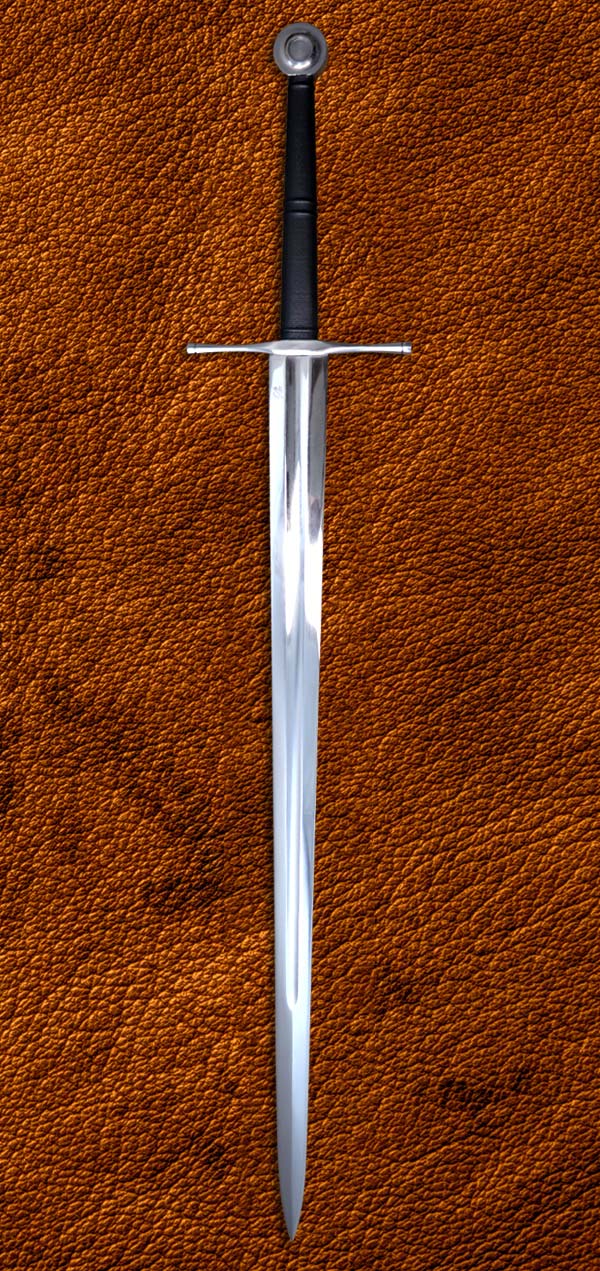
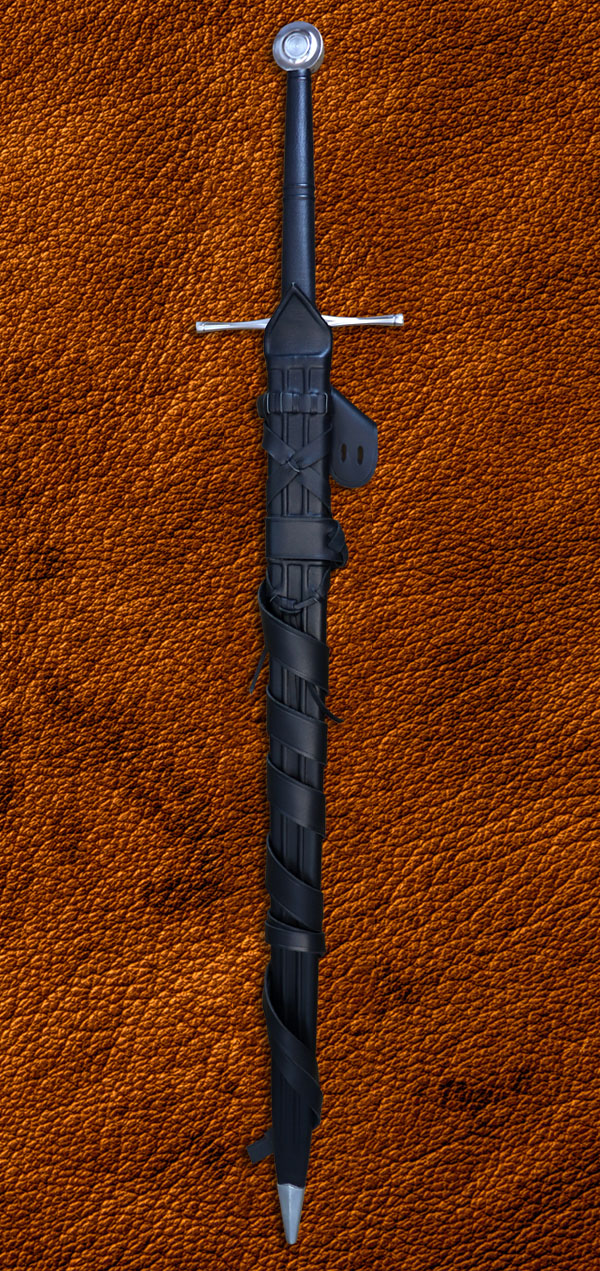
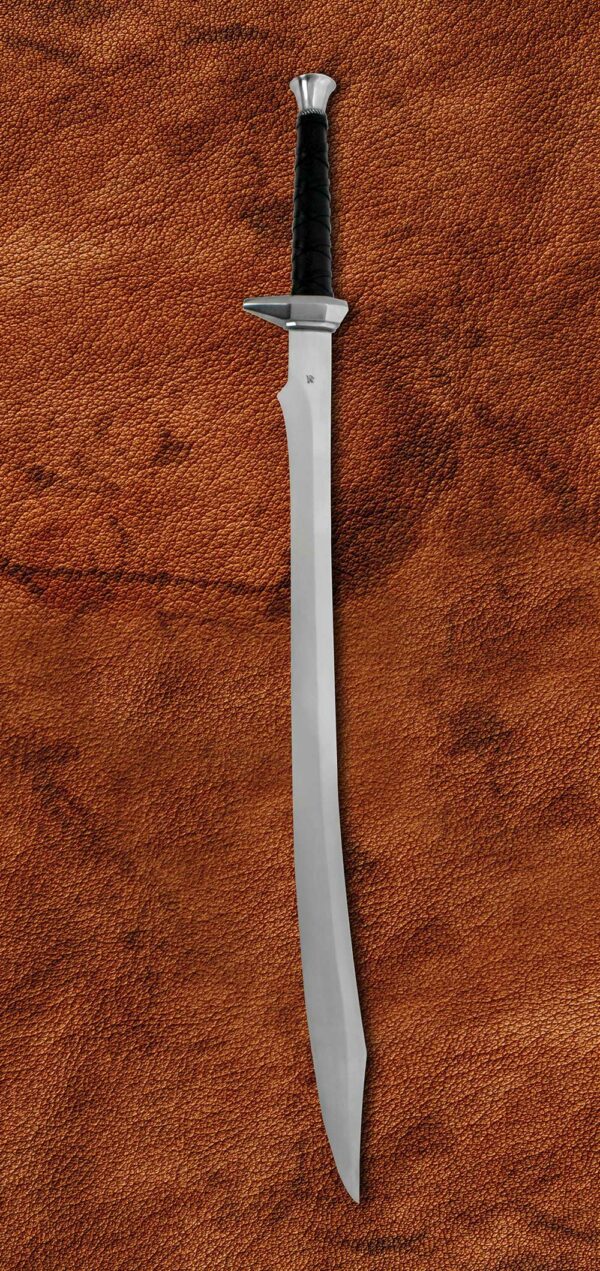
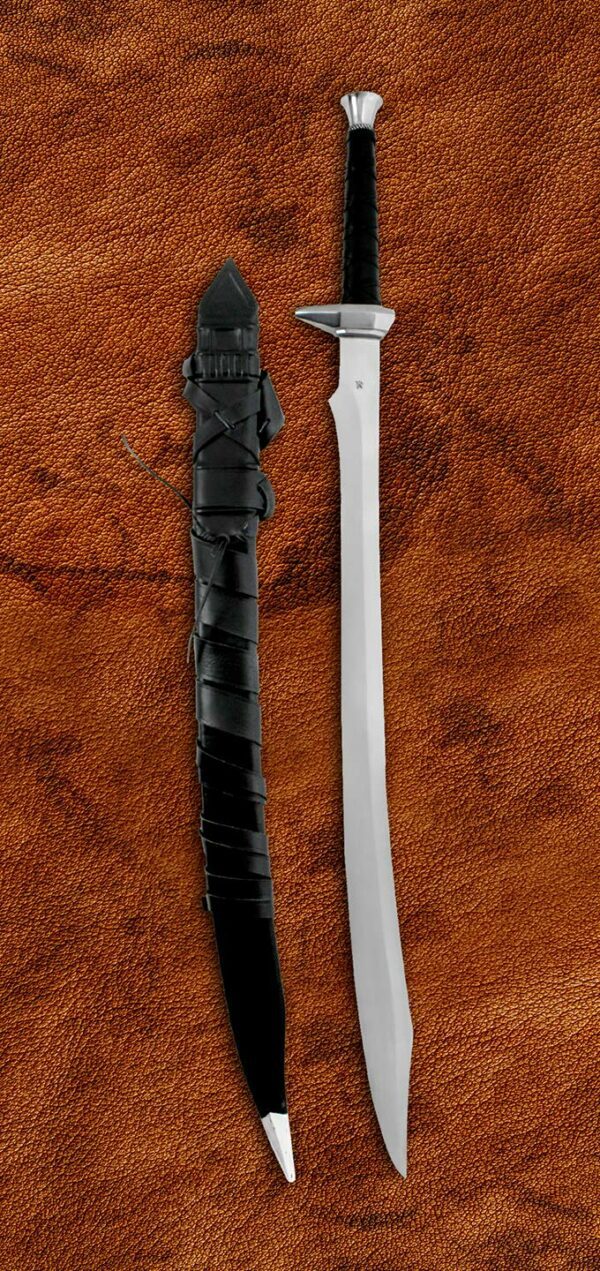
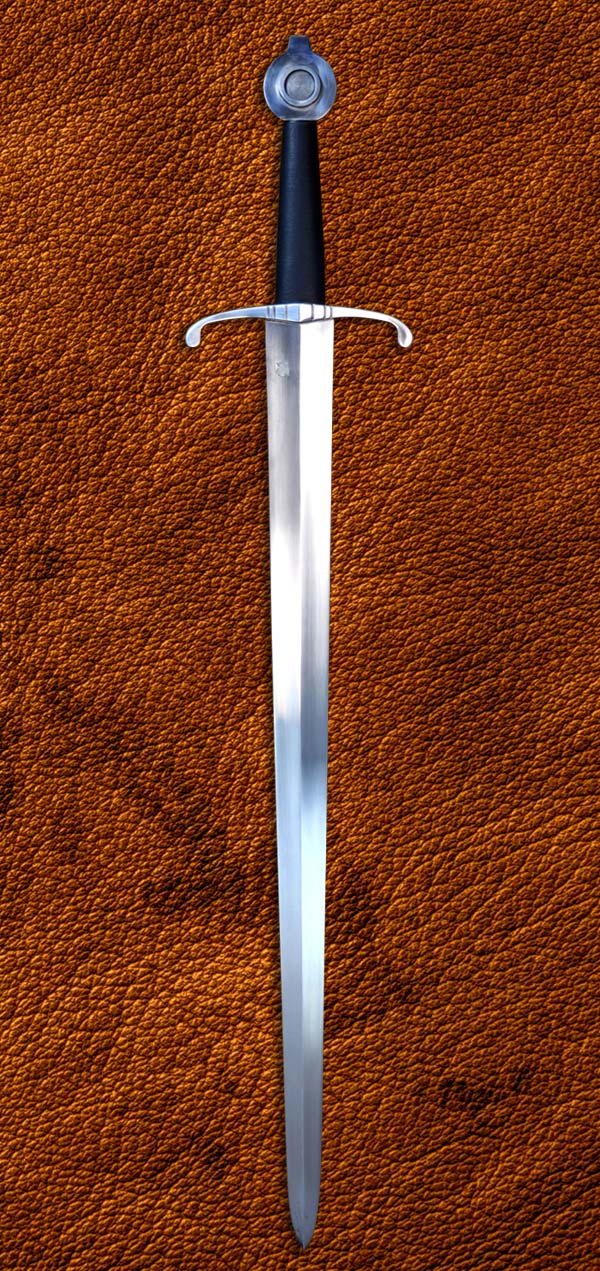
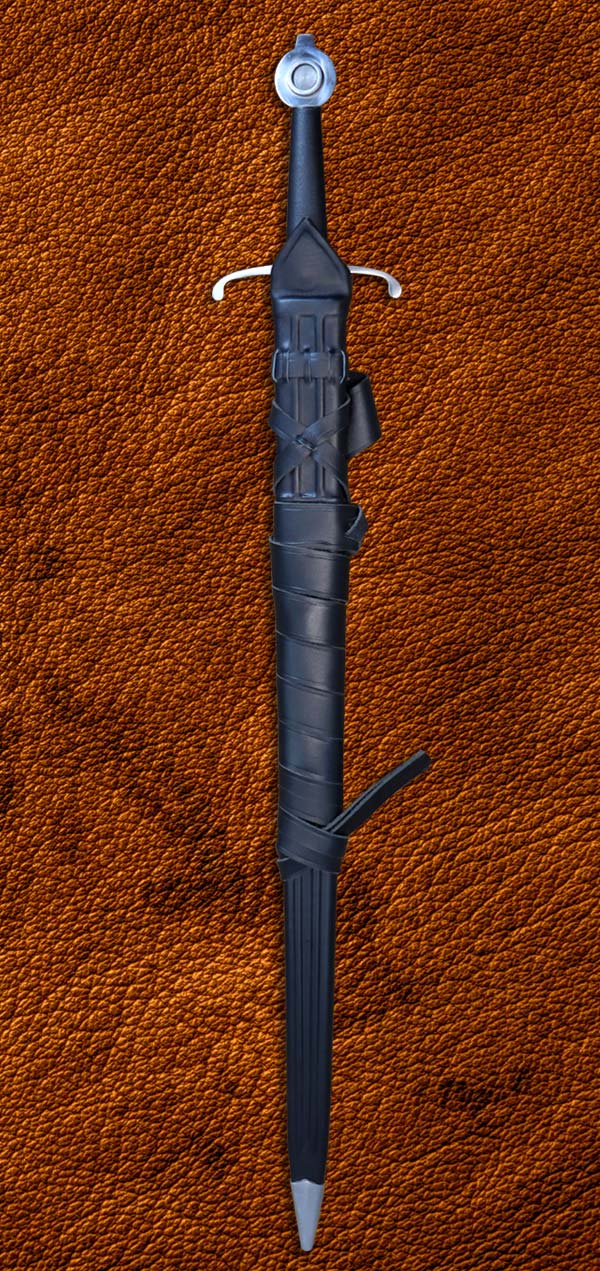
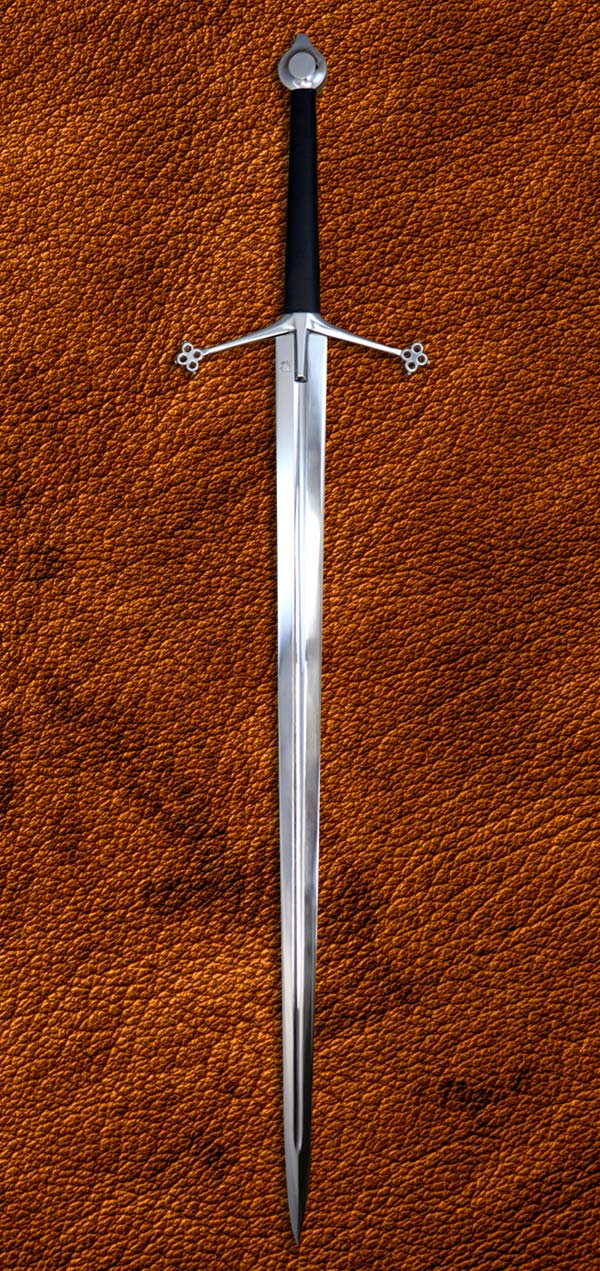
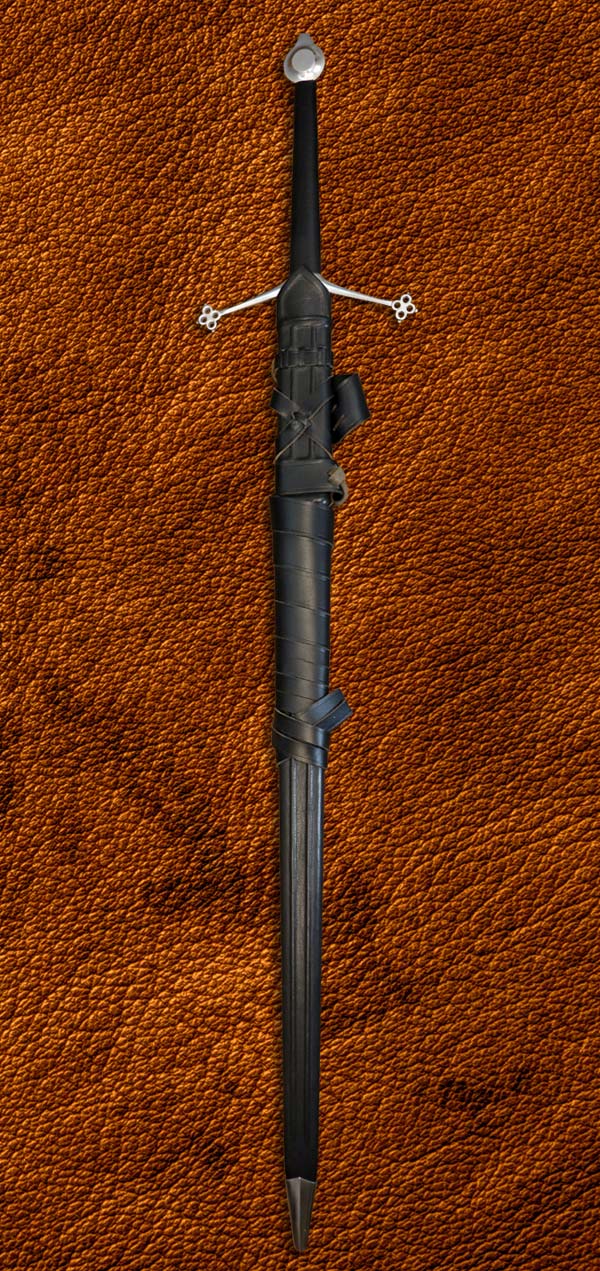
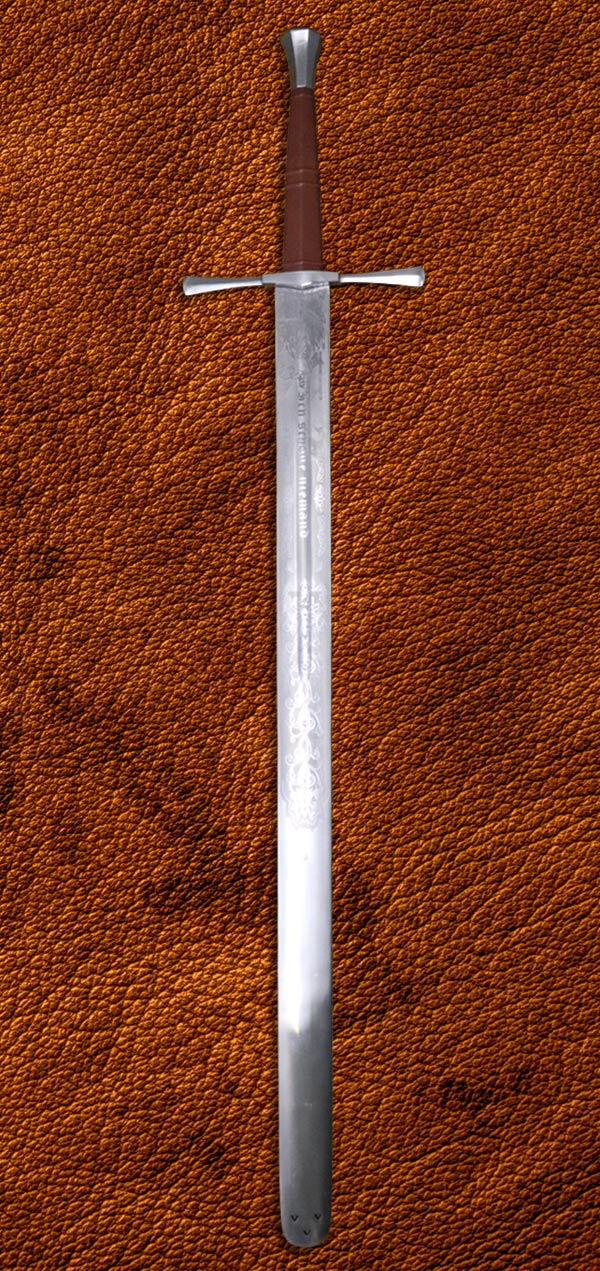
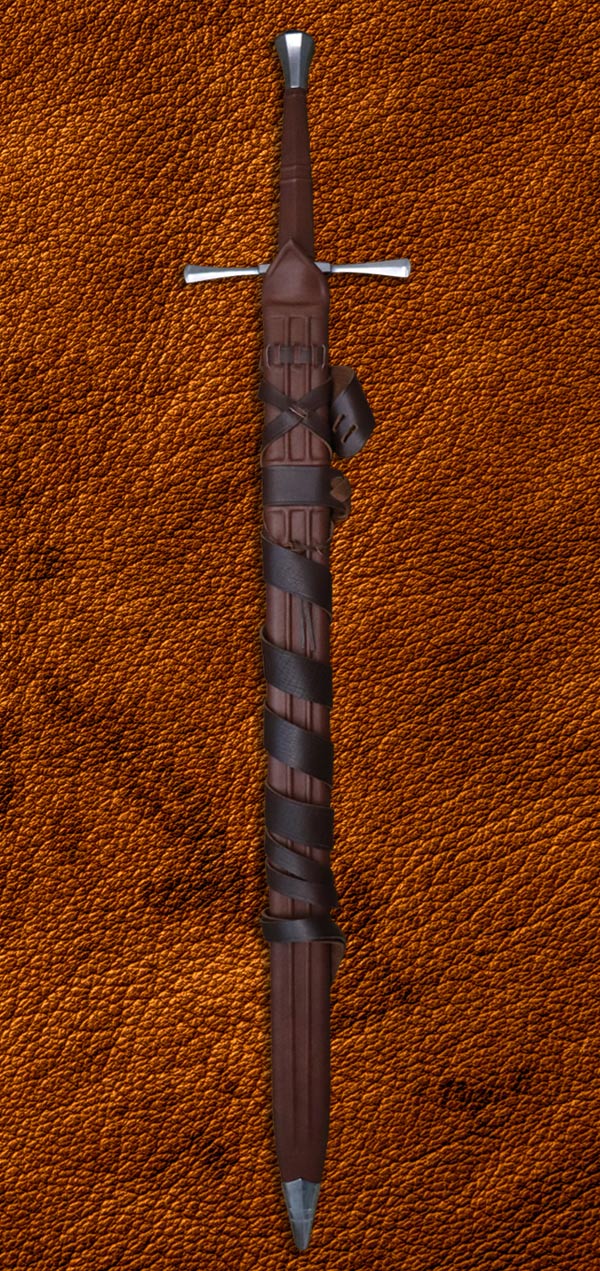
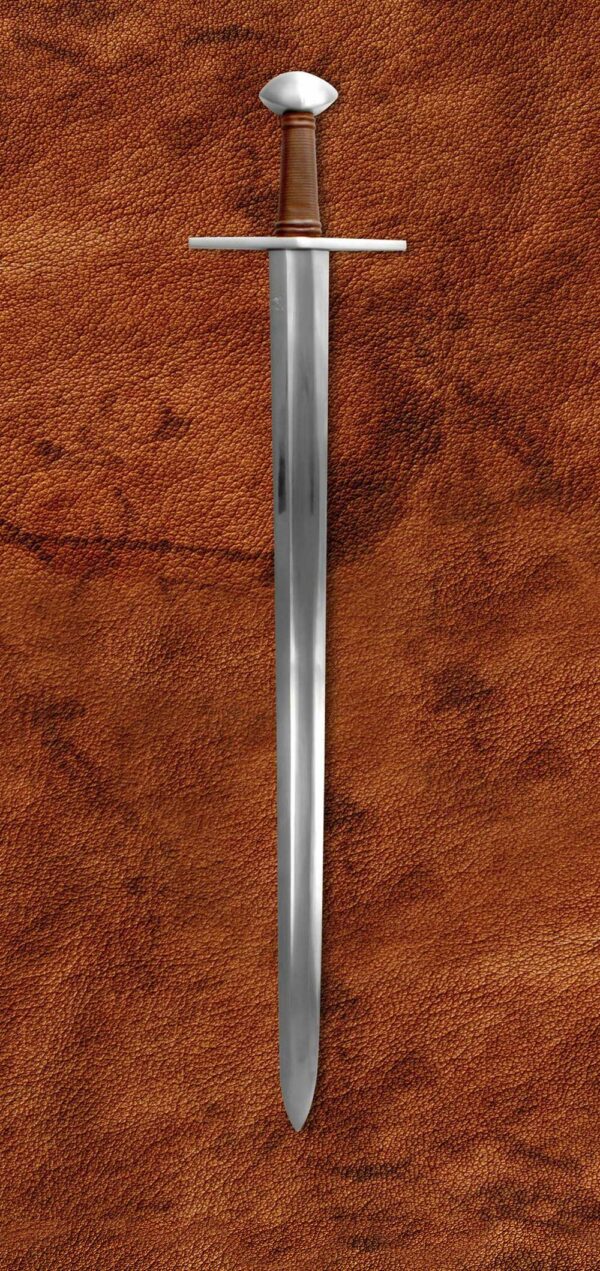
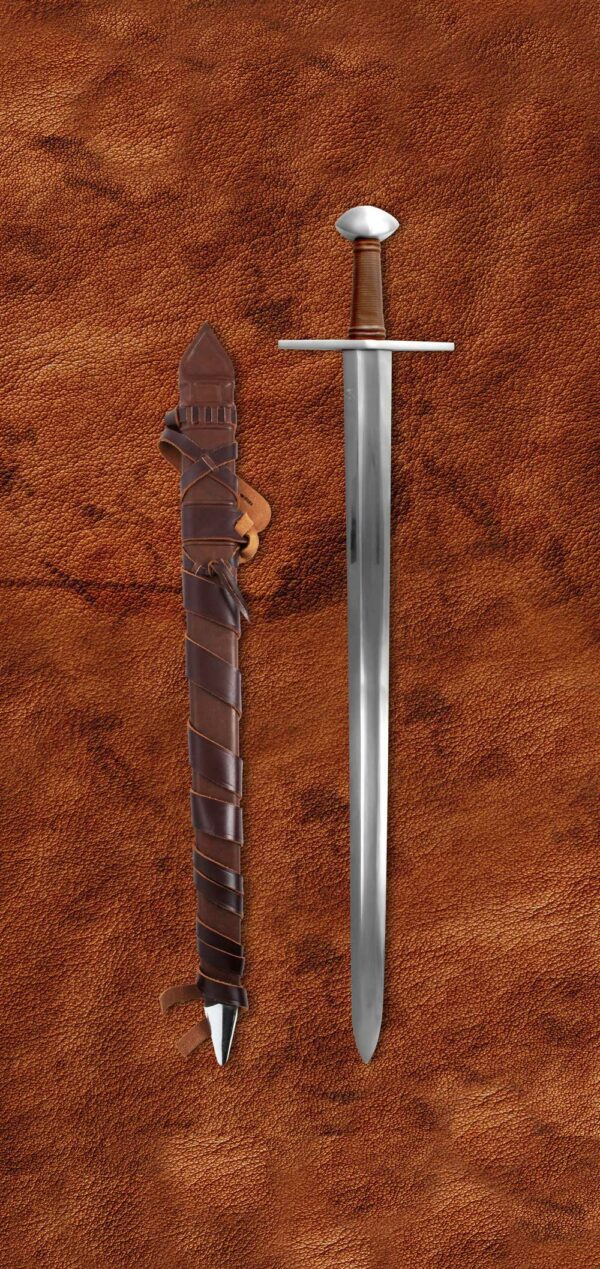
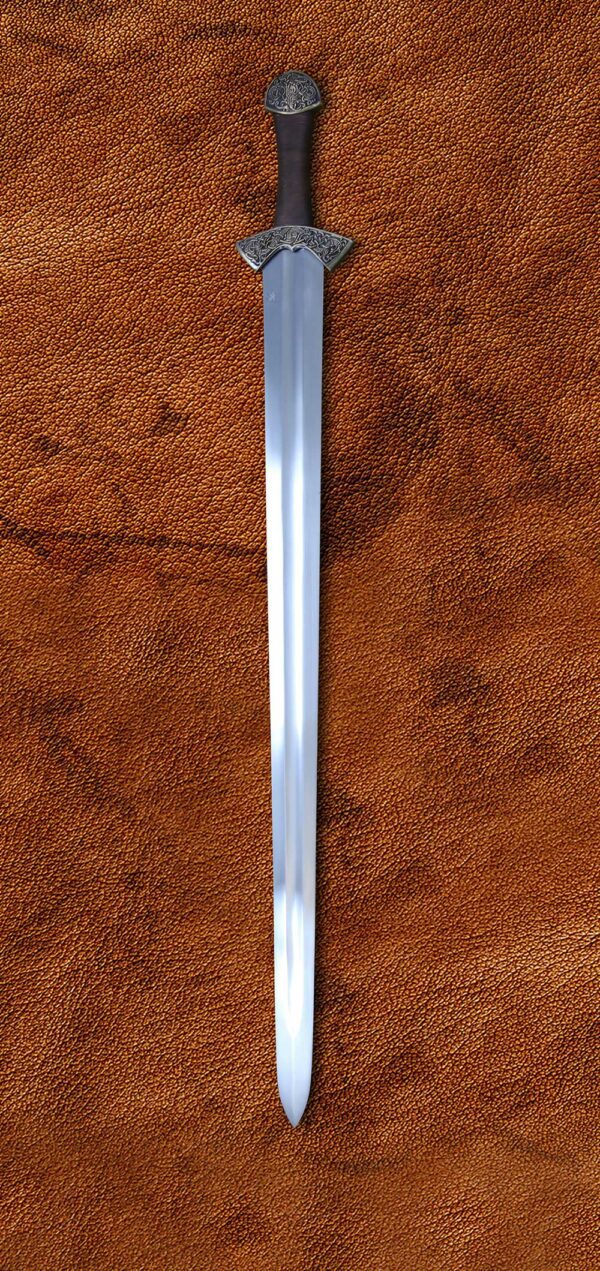
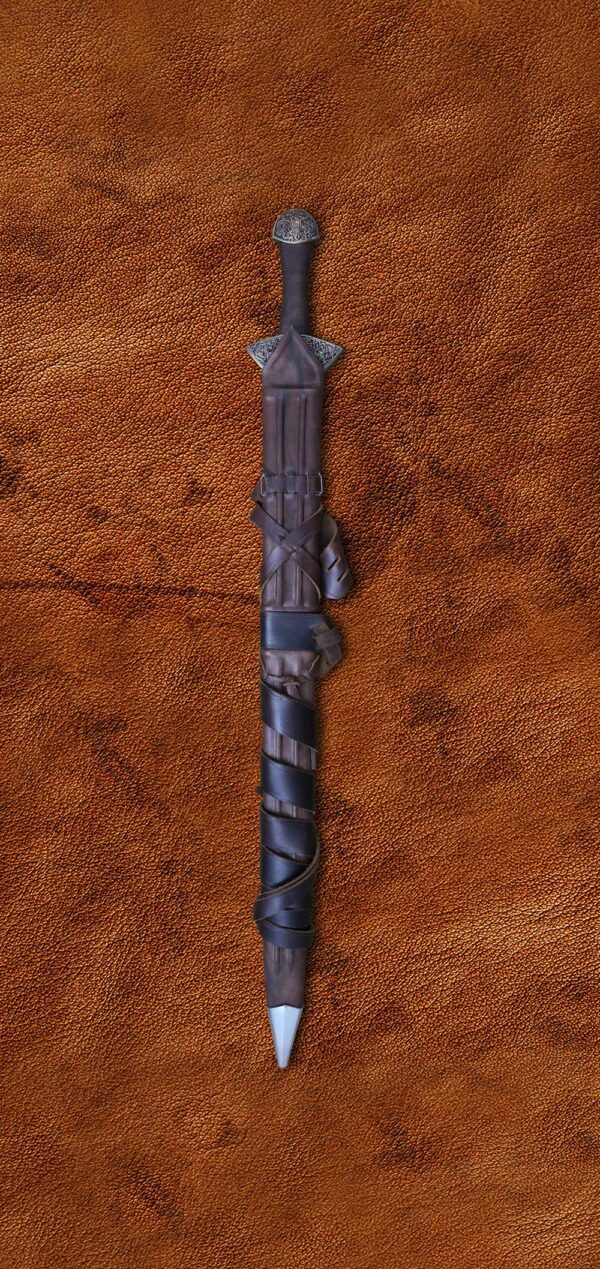
Steven Winnett (verified owner) –
A very interesting sword with great geometry. This sword measured in at 50.5″ with a 39″ blade. The percussion node coincides with the forward pivot point perfectly at around 25″ along the blade. The flat and generous hexagonal grip feels great in the hand and the leather work is very good. The Gothic styled pommel is stunning and a unique design. The blade is stiff but not overbuilt, has distil taper and the POB is about 5″ from the grip. This is a long, lively and lethal blade, adept at cutting and a devastating thruster. As a conceptual piece this sword is visually striking but practicality has definitely not been sacrificed for the sake of art. This sword, without a doubt, would hold it’s own on any battlefield. Well done DSA, I am very impressed and hope you continue to find new sources of inspiration.
Mike Felix –
My Black Death Gothic arrived on Friday, from Kult Of Athena. This is a large longsword- slightly over 50 inches, with a 39 inch blade. I didn’t get to go outside & properly handle her till today. Now, using it in just one hand, it does come off as a bit hefty, but was still maneuverable. However, when using it two-handed, it becomes agile & fast! I did cut a couple of water bottles, & she did well, but where this sword excels is the thrust. I impaled several heavier plastic containers & an old gambeson, & it was so easy it was scary! I want to get in a more substantial test with it, but I must say that the Black Death is a fearsome & wicked longsword, that is supremely capable. I would give it 6 stars if I could! Buy this sword! You will not be disappointed!
Mike Bolton (verified owner) –
I purchased this blade in mid August 2021, and received it within four weeks (I live in New Zealand, about as far away from Canada as you can get. Coincided with a nationwide lock down, and it turns out that swords are not classified as essential items. Who knew?). Since I was expecting six weeks, I am a happy camper. No signs of damage, in spite of the package looking as if several elephants had sat on it (also expected). No signs of rust, blade straight and true, brilliant. And yes, it’s beautiful. Everything I had hoped for and more. Will be coming back for another blade or three, I love the look and feel of it, minor blemishes just add to its appeal as far as I am concerned. The only things that I feel could be improved are:
1) The slot in the handguard is far wider than it needs to be given the width of the blade at that point, and detracts a bit from the appearance. The guard itself is very solidly mounted and doesn’t move, so primarily cosmetic. Just feel this shouldn’t cost anything to improve, or very little.
2) The finish on the peened end of the tang and the inside of the “v” of the pommel is not up to the standard of the rest of the sword. I appreciate it must be a pure bitch trying to peen that at the bottom of the v, and I am sure that 20 minutes work with a smooth file will fix the finish on the v. Just something to look at maybe.
Overall: I love it, and can’t wait to slice up a few pumpkins for winter soup…. 9.8 out of 10
Jared Pelletier (verified owner) –
This is Alot of Sword! And yes it Looks really Cool in your Hand! Most ppl will lok at you like..”you use that?” you say..what this..its a tooth pick!